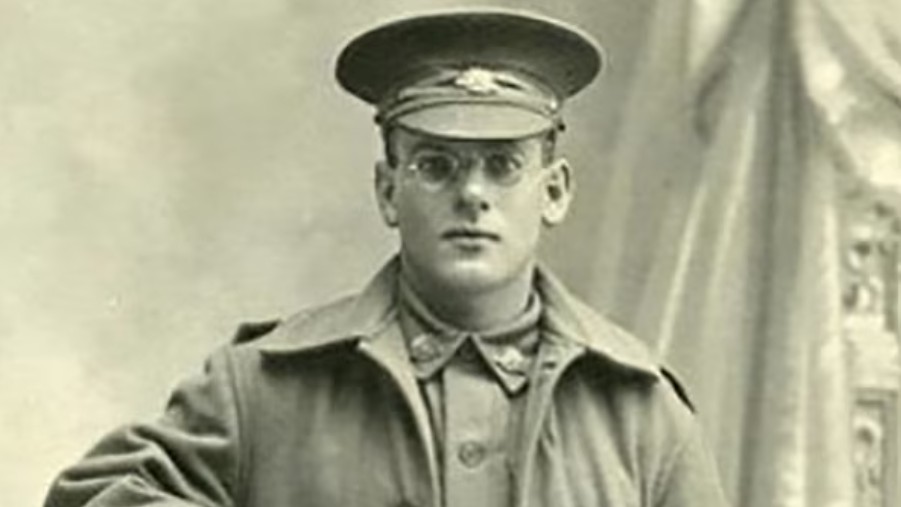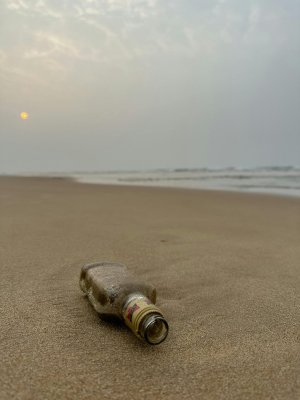
When the Southern Ocean decides to give up one of its secrets, the results can be extraordinary.
That's exactly what happened this month when a family cleaning up Wharton Beach near Esperance discovered something that would reconnect two families with their fallen WWI ancestors in the most remarkable way.
Debra Brown and her daughter Felicity were doing their usual litter collection along Wharton Beach on 9 October when they spotted a thick, clear Schweppes bottle just above the waterline.
What they found inside would prove to be a time capsule from 1916—two handwritten letters from Australian soldiers bound for the battlefields of France.
Letters from the deep
Inside the bottle were two letters written in pencil by Privates Malcolm Neville, 27, and William Harley, 37, dated 15 August 1916.
The men were aboard HMAT A70 Ballarat, which had departed Adelaide just three days earlier on 12 August, carrying Australian troops to the Western Front.
Malcolm Neville, from the small South Australian town of Wilkawatt, had addressed his letter to his mother Robertina, asking whoever found the bottle to deliver it to her.
His message was cheerfully optimistic, describing the food as “really good” except for one meal that was “buried at sea.”
He wrote that they were “somewhere at sea,” while his companion William Harley noted they were “somewhere in the Bight”—referring to the vast Great Australian Bight.
The poignancy of young Malcolm's letter becomes even more profound when you consider his journey to reach that ship.
Military records show he first enlisted early in 1916 but was discharged after just a month due to poor eyesight.
Determined to serve his country, he re-enlisted a week later and joined the service corps.
Tragically, less than a year later, in April 1917, Malcolm was killed in action in France at the age of 28.
Did you know?
Ocean bottle science According to oceanographer Curtis Ebbesmeyer, bottles released more than 160 kilometers from shore have recovery rates below 10 percent, and “only a few percent” of those released more than 1,600 kilometers from shore are ever recovered.
This isn't Western Australia's first record-breaking bottle discovery.
In 2018, the world's oldest known message in a bottle was found half-buried at a West Australian beach—nearly 132 years after it was tossed overboard in the Indian Ocean.
From 1864 until 1933, thousands of bottles were thrown into the world's oceans from German ships as part of scientific experiments to track ocean currents.
Modern detective work reunites families
What happened next showcases the power of modern technology to bridge historical gaps.
Debra Brown became determined to trace the soldiers' families.
“All I did was type in Neville and Wilkawatt, those two words, and Herbie's profile came up,” she explained.
Malcolm's great-nephew Herbie Neville described the discovery as “unbelievable” for his family.
His 101-year-old aunt had often shared stories over the years about “Uncle Malcolm” and how he never came home from the war.
“It seemed like he was genuinely eager to go to war. It’s just heartbreaking what happened—so tragic that he lost his life,” Herbie said in an interview with CNN.
The second soldier, William Harley, had a different story. His mother had already died by 1916, so he told any finder they could keep his note.
But Harley survived the war and went on to have children. His granddaughter Ann Turner called the discovery “a miracle,” adding that there are still five grandchildren alive who have been in constant contact since the find.
The tragic fate of HMAT Ballarat
The story of the ship itself adds another layer of poignancy to this discovery.
HMAS Ballarat, originally a P&O liner built for the Australian emigrant service, was requisitioned as a trooper during WWI.
On 25 April 1917—ironically, the second Anzac Day—a German submarine torpedoed her in the English Channel. While all passengers and crew were rescued and she was taken in tow, the ship sank the next day.
The Times noted that 15 of those rescued were also survivors of the ordeal at Gallipoli, highlighting the multiple challenges these servicemen faced during their war experience.
Why this matters for document preservation
The remarkable preservation of these 109-year-old letters offers valuable lessons for anyone interested in family history. The pencil writing remained legible because graphite is more stable than ink over long periods, and the thick glass bottle protected the papers from complete water damage while the cork seal kept them relatively dry.

What to do if you find historical treasures
Wilkawatt, where Malcolm came from, is now described as “virtually a ghost town in South Australia”, but his family connections remain strong. This discovery has sparked fresh interest in both local and family history research.
If you're a beachcomber or treasure hunter who discovers something of potential historical significance, here's what experts recommend:
- Photograph the item in place before moving it.
- Contact your state museum or local historical society.
- Keep detailed records of exactly where and when you found it.
- Handle items minimally to avoid damage.
Community connections and local history
Local historian Maureen Steinborner noted that the find has sparked “fantastic interest” in the community, saying it “makes people think about their history a little bit more, and what actually happened.”
The discovery comes at a time when Wharton Beach has been revealing other historical secrets. Shifting tides and high water levels have recently exposed traces of an ancient wetland buried beneath the sand, showing how dynamic coastal environments can be both preservers and revealers of history.
The Browns plan to mail the original letters to the soldiers' respective families, keeping copies for themselves along with the historic bottle.
It's a fitting resolution that honors both the soldiers' original intentions and the remarkable journey their words have taken across more than a century.
This extraordinary discovery reminds us that history isn't just found in museums and textbooks—sometimes it washes up at our feet, waiting for curious minds and caring hearts to reconnect it with the families who treasure these glimpses into their ancestors' lives.
Have you ever discovered something historical during your beach walks or property maintenance? What family treasures do you have tucked away that might fascinate future generations? Share your stories of historical discoveries and family connections in the comments below.






